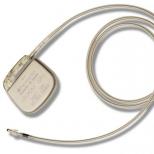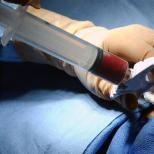How to deal with VVD effectively: recommendations
(VSD) is characterized by malfunctions of the autonomic system. This in turn causes a huge number of symptoms. Fighting the disease is extremely difficult. With the right approach to therapy, there is a chance of a complete cure. The approach must be comprehensive. A person should tune in to the long-term implementation of the doctor's recommendations.
Health care
First of all, a person who is thinking about how to deal with VVD should visit a doctor. A detailed examination will be carried out, during which the type of vegetovascular dystonia is determined. Based on the results of the diagnosis, appropriate treatment is prescribed.
Sedatives are almost always used as medicines. If it is found out that the VVD arose due to another disease, all forces will be thrown into its elimination.
Vegetovascular dystonia is subdivided into hypotonic and hypertonic.
The first type causes symptoms associated with weakness, sweating, and increased fatigue. The second type is manifested by a headache. Also, both types of IRR are characterized by panic attacks, tachycardia and constant anxiety.
At the initial stage of treatment, it is important to eliminate the symptoms that prevent a person from living comfortably. For this, sedatives are used. Most people suffer from panic attacks.
Doctors may prescribe the following remedies:
- natural sedatives (and motherwort)
- tranquilizers (Grandaxin, Phenazepam)
- metabolic agents (glycine)
- antioxidants, macronutrients and vitamin complexes (Mexidol, Complivit, potassium and magnesium)
Depending on the severity and type of VSD, the doctor will select the appropriate method of dealing with the disease. On their own, a person can start using only natural sedative medicines. Tranquilizers, vasodilators and antioxidants are used only on prescription.
Phytotherapy
Treatment of VVD is sometimes carried out with the help of natural herbs. Soothing and tonic agents are used. Their advantage is the absence of side effects. Herbs can be purchased at the pharmacy. There are the following herbal remedies that can help in the treatment of the disease:

- hawthorn fruit
- valerian rhizomes
- St. John's wort
- mint herb
Infusions are prepared from herbs and fruits, which are taken orally. Before using them, you should consult your doctor. It is necessary to find out if the herbs are compatible with the main therapy. If desired, they purchase ready-made infusions and tablets in pharmacies. Pharmaceutical companies strictly monitor quality, so buying a finished drug is the preferred solution.
It should be understood that phytotherapy acts as an addition to the main treatment. Only with a mild course of VVD, herbs can help get rid of all the symptoms of the disease on their own.
Herbal treatment should not exceed 1-2 months (depending on the specific remedy). Therapy should be combined with other methods of getting rid of the disease. After 3-4 months, the course of phytotherapy is repeated.
Read also:
What is the pituitary gland of the brain: causes of excess and insufficiency of pituitary hormones
Physical Culture
If a person wants to get rid of the disease, he needs to change his lifestyle. Drug therapy is carried out in courses. Physical exercises are used on an ongoing basis, even if it was possible to remove all manifestations of the disease.
Doctors say that without physical activity, taking medication will not give any results. Gymnastics exercises will do. It should be understood that it is not the muscles that are trained, but the vessels, so there is no need to overwork. Attention is paid to proper breathing and general relaxation. After a workout, a person should feel better than before.
Exercises are selected based on the type of disease. General exercises can be used, among which are:

- Shoulder rotation. Put your palms on your shoulders, then begin to rotate your shoulders 10 times back and forth.
- Body rotation. Put your hands on your belt. Perform 10 rotations in each direction.
- Raise your arms up and to the side. Raise your arms above your head, then spread them to the side, return them along the body and repeat the exercise 8-10 times.
You can use other exercises from gymnastics and regular physical education. The most important thing is to breathe correctly. When exerting, you need to exhale, and when relaxing, inhale the air.
With VVD of the hypertensive type, exercises should be avoided in which blood will rush intensely to the head. People suffering from hypotonic-type vegetative-vascular dystonia will feel the effect of exercise much earlier. Physical activity will help get rid of chronic malaise and weakness.
If there are no contraindications, a person will be able to do:
- running
- swimming
- aerobics
- fitness
It is worth approaching with caution. If the program is correctly designed, then only benefits will be extracted. Moving from lighter loads to more complex ones, it is possible to strengthen your body and resist any external influences.
Read also:
What causes a blister on the penis, the main signs of appearance, diagnosis and treatment methods
Diet for VVD
Another detail of complex treatment is diet. Proper nutrition can significantly improve your well-being. First of all, the diet means the exclusion of alcohol and other harmful products. You need to eat natural and healthy food. You need to add to your diet foods that are rich in:
- potassium and magnesium
- vitamins
- solid dietary fiber
A general diet adjusted for vascular support will do. With VVD, you need to eat foods that have a positive effect on the vascular system.
To increase vascular tone in hypotensive disease, dairy products, tea, and coffee are used. If a person suffers from VVD of a hypertensive type, these products, on the contrary, will need to be excluded.
It is necessary to reduce vascular tone by eating more carrots, spinach and beans.
General principles of the diet include:

- fractional meals 4-5 times a day
- use of plant foods as a source of fiber
- exclusion of alcoholic beverages
- no overeating
You don't have to stick to a strict diet. It should not affect the psycho-emotional background. If there are no concomitant diseases, you can eat the same way as before, excluding only the most harmful foods. Eating should be enjoyable.
If a person is underweight or overweight, it should help to get rid of it. The autonomic nervous system begins to work correctly if there are no concomitant diseases.
Psychotherapy to help
If a person suffers from the appearance and constant anxiety, he needs to take the help of a specialist. Often, vegetovascular dystonia causes serious mental illness. To fight them, drug therapy is not enough, the help of a psychotherapist is needed.
Psychotherapy sessions are conducted by a psychotherapist. You cannot help yourself in this case. Between sessions, a person adheres to all the recommendations of a specialist, tries to avoid stress and situations that provoke him.

To achieve the effect of the doctor, you need to visit regularly. The duration of a psychotherapy session depends on the severity of the symptoms and the individual characteristics of the person. A person visits a psychotherapist until the unpleasant manifestations that interfere with a comfortable life are completely eliminated.
To get rid of VVD, a person must:
- try to calm down when having a panic attack
- try to maintain a stable psycho-emotional background
- use medication, lead an active lifestyle





